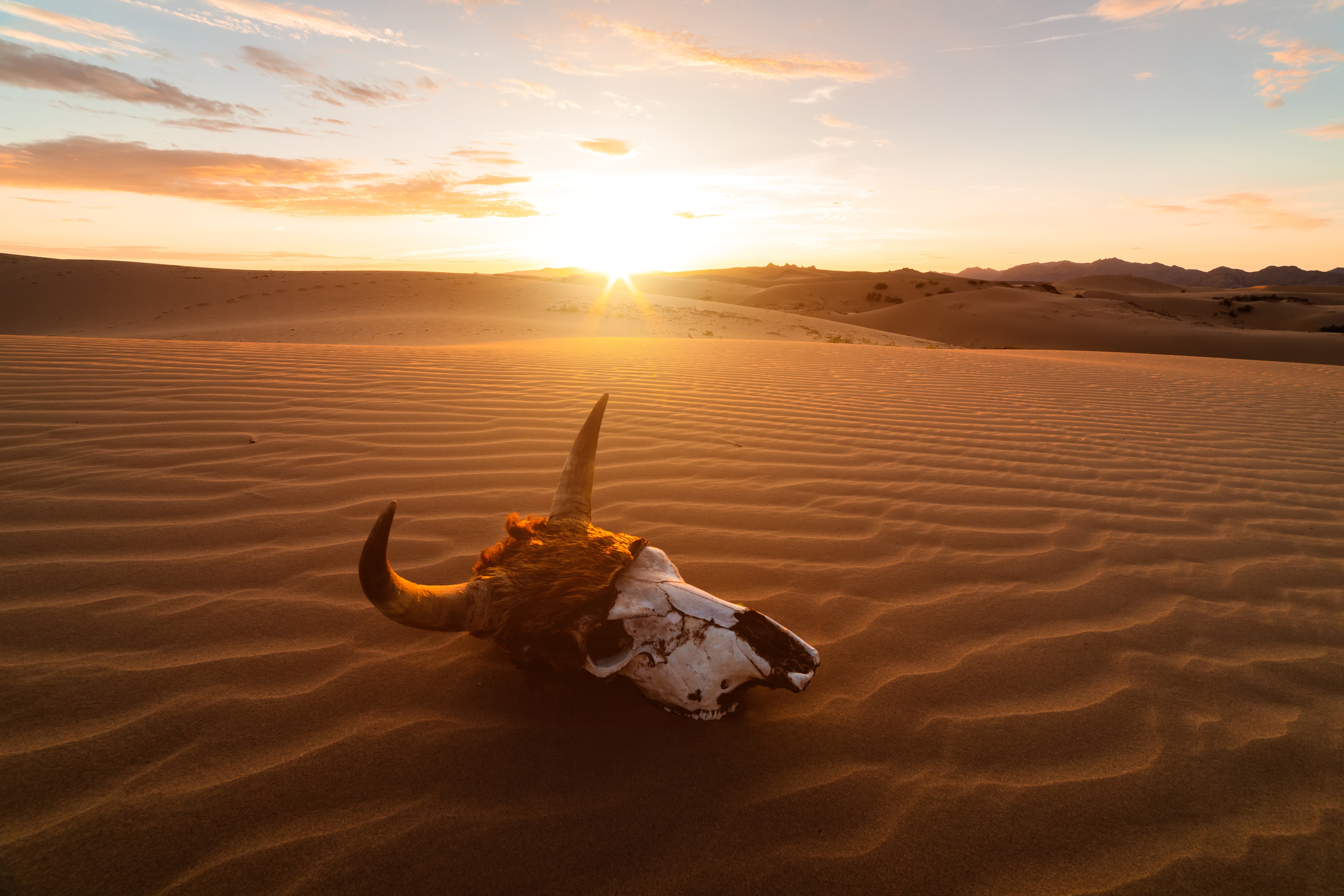Create a free profile to get unlimited access to exclusive videos, sweepstakes, and more!
This is what global warming did 10,000 years ago, and it could happen again
Ancient, now-dry rivers shows global warming was around long before humans could do further damage.

What is now the Sahara desert might resemble the parched land of Arrakis in Dune more than anything remotely lush, but it once was — until climate change got to it.
The phenomenon of global warming was around long before humans could develop the technology to significantly impact the planet. New research has found that rivers which once flowed in the ancient Sahara suffered excess flooding when the heat was turned up about 44 degrees Fahrenheit. This brought on quadruple the rain, and while the Arrakeen might have welcomed this, resulting floods forced anyone who lived there to flee.
You wouldn’t have recognized the Sahara between 16,800 and 7,500 years ago. It was more like Calladan than Arrakis, a fertile land fed by rivers that allowed life to flourish. Researchers Abdallah Zaki and Sébastien Castelltort have looked back in time through the rock record, which told them how Earth reacted to such an extreme case of global warming.Their findings, recently published in Quaternary Science Reviews, tell us we don’t want any deja vu.
“The precipitation rate was around 55-80 mm/hr,” Zaki told SYFY WIRE. “Imagine New York City receiving about 1,300 mm/yr in nearly 120 days per year. During that time, the quantified intensities (55-80 mm) were 3-4 times more than before and after the African Humid Period.”
To find out what happened to the fossil rivers, the researchers investigated rocks in the now-dry riverbeds. This was not too different from the findings at Jezero Crater that led scientists to confirm their suspicions that it was an ancient crater lake. The presence of larger pebbles indicated that they are carried over by a large amount of water that was capable of moving that weight. Factoring in the surface area of the drainage basin (which connects upstream waters to a river) helped Zaki and Castelltort figure out how much precipitation there was.
It wasn’t the entire Earth that heated up, so technically not global warming, but the regional warming in the area was enough to give away what could possibly happen with such a spike in heat. Whether the cause is anthropogenic doesn’t really matter as much as the consequences. This catastrophe is thought to have resulted from changes to Earth’s orbit that allowed more solar radiation to hit that particular region, driving temperatures up, which in turn allowed the atmosphere to hold more water. Atmospheric water turned to devastating rain and floods.
“That catastrophic precipitation turned the Nile Valley into a hazardous place for around 3,000 years,” said Zaki. “With each one-degree increase in temperature, the precipitation rates will increase by 7% to 14%, depending on the local temperatures.”
While that might not sound like much, it is drastic. Say that human activity keeps shredding the ozone layer and allowing more solar radiation in. Never mind the other disastrous things that could happen, the water levels alone would rise to the point that entire populations would be forced to get as far away from tumultuous lakes and rivers and oceans as they could. It’s already starting. As recently as 2018, floods were the reason 5.4 million people had to move suddenly, with overall extreme weather displacing more than 16.1 million. This is our reality right now.
Speaking of Mars, Zaki is currently studying Saharan and Arabian fossil rivers to get a better understanding of features on Mars that, like Jezero crater, might have once been flowing with water. Such comparisons might even tell scientists the chances that life-forms were able to exist in these areas, and what the overall habitability of Mars was during different epochs.
“Our current results from the Sahara fossil rivers suggest that similar Martian rivers might have formed due to thousands of years of flowing water, possibly enough to favor habitability,” he said. “This may help the search for ancient life on Mars.”


























